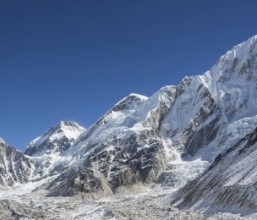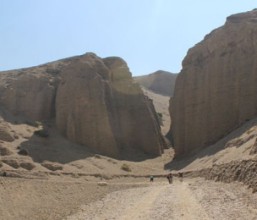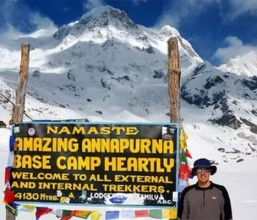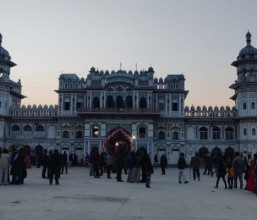Blog

Cost for Annapurna Circuit Trek
Annapurna Circuit Trek is one of the popular trekking choices in Nepal for many people. The grade of the trek ranges from moderate to hard offering you the chance to trek through the lush green valley, wonderful villages and opportunity to explore diversified culture. During the trek you will enter and exit Nepal’s beautiful and...
Read more
Upper Dolpo: The Best Trekking Destination
Upper Dolpo, a remote place in the far western region of Nepal, is the home to ancient Bon culture and astonishing landscape that mesmerize the visitors. It was once a forbidden land for the foreigners but now it has opened its door to all the visitors from around the world to explore the natural and cultural beauty of the region which in...
Read more
Need to Know about Pisang Peak Climbing
All You Need to Know about Pisang Peak Climbing Pisang Peak is an interesting pyramidal trekking peak standing 6091 meters above the sea level. It is one of the popular trekking peaks, situated on the Annapurna Circuit in Manang district. Pisang Peak climbing is a famous adventure activity in Nepal for both experienced and no...
Read more
Things to Know about Everest Base Camp Trek
Everest Base Camp is the most popular trekking destination in the foothills of the highest mountain of the world, Mt. Everest (8848m). Everest Base Camp Trek is a thrilling and unforgettable lifetime experience. The journey takes you through the breathtaking high-altitude landscape, where you will pass through Sagarmatha National Park...
Read more
Things you need to know about Lobuche Peak Climbing
Lobuche Peak is a stunning trekking peak located in the Khumbu region. It is considered as a non-technical peak. Lobuche Peak consists of two peaks – Lobuche East (6119m) and Lobuche West (6145m). Between these two, Lobuche East is more frequently climbed than Lobuche West. Lobuche Peak Climbing is an excellent introduction to Himal...
Read more
Top 5 Adventure Sports in Nepal
Travelling in Nepal is not just about trekking and mountaineering. Many people might not think Nepal as a destination for adrenaline-filled adventures, but there are so many different activities and extreme sports Nepal has to offer to the adventure junkies. Nepal’s extreme geographical terrain is an ideal place for adventure sports...
Read more
Upper Mustang - a Land of Myth, Mystery and Magic
Upper Mustang - a Land of Myth, Mystery and Magic Upper Mustang, an isolated land hidden among the deserted mountains, is beyond the Himalayas standing at the edge of the Tibetan Plateau. Upper Mustang is an ancient Buddhist kingdom spread over an altitude variation of about 3000m to 4000m, in the middle of Dhaulagiri Massif and Annap...
Read more
Things to know about Annapurna Base Camp Trek
Annapurna Base Camp Trek is one of the most popular treks in Annapurna region. The trip takes you to the base of the world’s 10th highest mountain Mt. Annapurna (8091m). This classic trek offers you the best experiences of the naturally diverse landscape and culturally rich villages of Annapurna region. During the trek, you will wit...
Read more
Things you need to know about Island Peak Climbing
Island Peak (6189m), also locally known as Imja Tse, is located in the Chhukung Valley of Everest Region. The mountain was named Island Peak in 1953 by Eric Shipton as it appears as an island in a sea of ice while viewed from the nearby village. It’s a stunning island of ice and rock circled by glaciers and high mountains, situated...
Read more
Why to Visit Nepal?
Nepal, one of the most beautiful countries in Asia with amazing mountains, dazzling nature, and friendly people! Travelling to Nepal is always the best decision as it offers you a very rewarding experience that you can treasure for the rest of your life. Nepal is a small country between two Asian giants India and China. Though it is a...
Read more